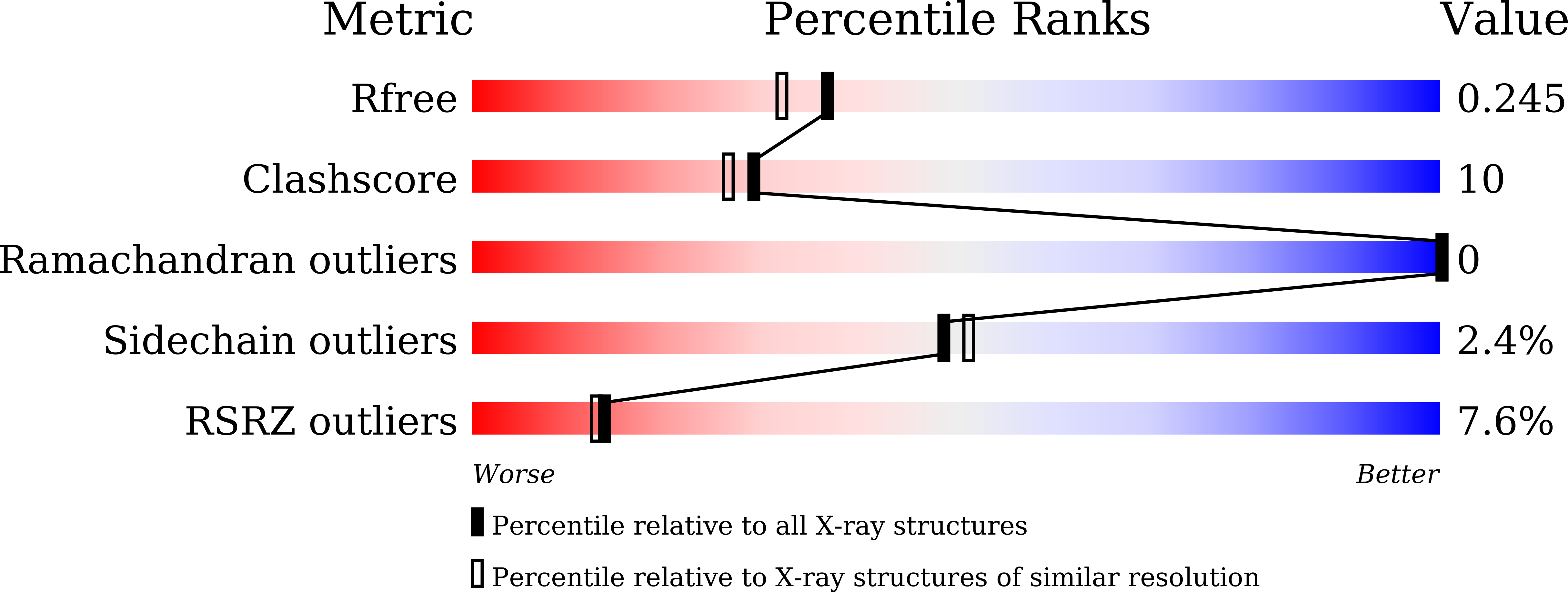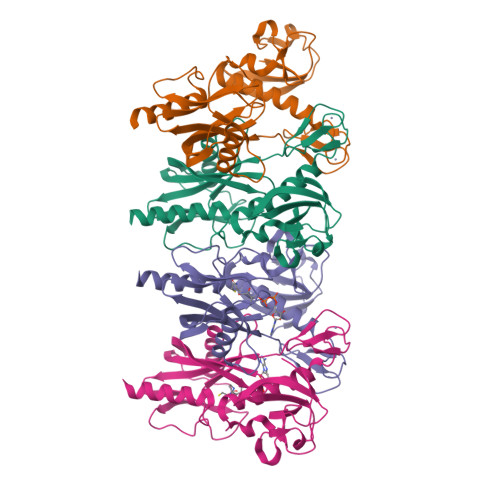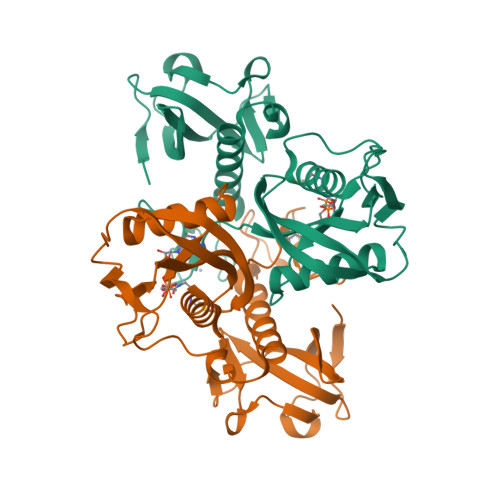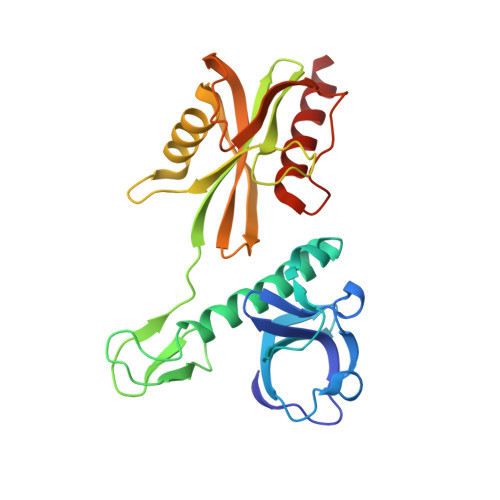Structural insights into dpCoA-RNA decapping by NudC.
Zhou, W., Guan, Z., Zhao, F., Ye, Y., Yang, F., Yin, P., Zhang, D.(2021) RNA Biol 18: 244-253
- PubMed: 34074215
- DOI: https://doi.org/10.1080/15476286.2021.1936837
- Primary Citation of Related Structures:
7E44 - PubMed Abstract:
Various kinds of cap structures, such as m 7 G, triphosphate groups, NAD and dpCoA, protect the 5' terminus of RNA. The cap structures bond covalently to RNA and affect its stability, translation, and transport. The removal of the caps is mainly executed by Nudix hydrolase family proteins, including Dcp2, RppH and NudC. Numerous efforts have been made to elucidate the mechanism underlying the removal of m 7 G, triphosphate group, and NAD caps. In contrast, few studies related to the cleavage of the RNA dpCoA cap have been conducted. Here, we report the hydrolytic activity of Escherichia coli NudC towards dpCoA and dpCoA-capped RNA in vitro . We also determined the crystal structure of dimeric NudC in complex with dpCoA at 2.0 Å resolution. Structural analysis revealed that dpCoA is recognized and hydrolysed in a manner similar to NAD. In addition, NudC may also remove other dinucleotide derivative caps of RNA, which comprise the AMP moieties. NudC homologs in Saccharomyces cerevisiae and Arabidopsis thaliana exhibited similar dpCoA decapping (deCoAping) activity. These results together indicate a conserved mechanism underpinning the hydrolysis of dpCoA-capped RNA in both prokaryotes and eukaryotes.
Organizational Affiliation:
National Key Laboratory of Crop Genetic Improvement, Hubei Hongshan Laboratory, Huazhong Agricultural University, Wuhan, China.



















